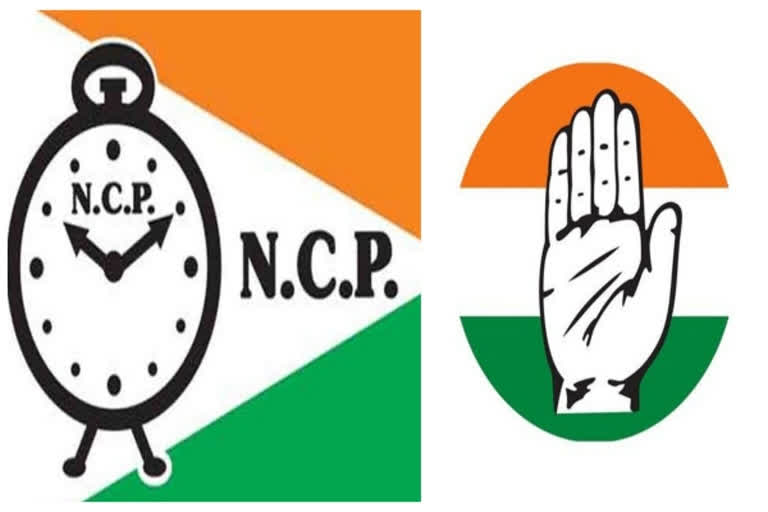Hyderabad: The issue of cutting down of trees in Mumbai's Aarey forest is in the headlines of late. On Friday, Bombay High Court allowed the felling of more than 2500 trees to pave way for the car shed of the proposed Metro rail project. Soon, environmentalists and others were up in the arms. There was a wave of general anger against Devendra Fadnavis, who has staunchly advocated this project, in the media and public at large. Many protests happened. But all by the small NGOs. All this while, the main opposition parties, namely, Congress and NCP remained silent spectators. Barring the protests of one or two individual MLAs, the parties did not do anything about the issue beyond making some noise in press conferences or on social media.
For the last year, the farmers' organisations are raising the issue of a crop insurance scam in the state. According to them a few private insurance companies have paid paltry sums as insurance claims to farmers and have pocketed the rest of the hundreds of crores of rupees from premium paid. Despite this being an issue concerning lacs of farmers, no Opposition party has taken it up as its main issue. Hence, here again, a young activist like Rajan Kshirsagar and small parties like CPI were seen leading the agitations.
Real Opposition
These are just two examples out of many. On these and other occasions, Congress and NCP ought to have been leading from the front. On the contrary, they were seen going into hibernation.
Interestingly, in both the incidents mentioned above, Shiv Sena, who is part of the BJP-led government in the state, was found agitating, though not with usual force. And, when after the High Court finally gave the nod to felling of the trees, not just media persons, but also the Congress spokesman was seen asking where is Aditya Thackeray ( who had earlier said that he will not allow any tree cutting in Aarey), forgetting the fact that Congress is also expected to play some role in it.
This sums up the political scenario in Maharashtra today. Shiv Sena remained the most ardent critic of the state and central government on most of the issues. At times, Saamana, Shiv Sena's mouthpiece, raised doubts about the Balakot, suspected some corruption in Rafale deal and criticised BJP and Devendra Fadnavis for failing to prevent the suicides of farmers. Compared to this Congress and NCP were far too subdued and ended up ceding the Opposition's space to Sena.
With Sena back in the alliance with the BJP, space is vacant. The moot question is whether the Congress-NCP can occupy that space, which in the first place is theirs. So far, both, and especially Congress, have shown very little or no sign of doing so.
Shrinking Vote Share
Voting statistics show that it is a matter of life and death for these parties. Congress's singular dominance came to an end in 1995, when the first BJP-Sena government was formed. Ever since then, the Congress' ( later with the NCP's) vote share has been slowly declining. In 1999 it was about 50 per cent. Later, though it remained in power for three consecutive terms till 2014 the vote share is coming down.
In 2009, when it won the assembly last time, Congress and NCP's combined vote share was about 37 per cent, while BJP-Sena's was 35 per cent. 15 years since then the vote shares in the Lok Sabha elections were – BJP-Sena – about 51 per cent and Congress – 32 per cent. This means that Congress and NCP have lost 19 per cent vote share in the last 20 years about five per cent in the last five years.
(In the Lok Sabha elections NCP won four and Congress just one seat. Out of this one, NCP MP has now since resigned and joined BJP. And the Congress MP who won had joined the party at the last minute from Shiv Sena).
Not a Single Leader...
